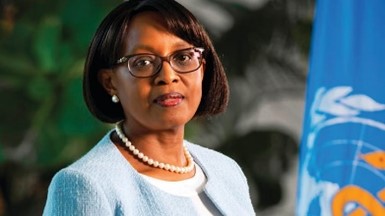Gays top HIV population
Studies on key and most-at-risk populations conducted in 2013 show high prevalence among men who have sex with men (MSM), female commercial sex workers (FCSW), injecting drugs users (IDU), uniform service personnel, miners, transport workers and mobile traders, Liberia’s Aids Commission says.
At the Third National AIDS Commission Liberia Board of Directors’ Meeting chaired by President Ellen Johnson-Sirleaf, updates on national HIV response were given at the Auditorium of the Ministry of Foreign Affairs Tuesday in Monrovia. In 2013, the Liberia Demographic Health Survey or LDHS put the country’s HIV prevalence at 1.9 percent, indicating a 0.4 percent increase over 2007 LDHS, the new report says.
LDHS is conducted every five years and provides data on education, fertility, family planning, child and maternal mortality, sexual behavior, maternal health, nutrition, child health, malaria prevention, HIV and AIDS knowledge and behavior. The 2013 LDHS shows that greater Monrovia and urban cities have the highest prevalence burden of 3.2 percent and 2.6 percent respectively, as compared to rural Liberia with a lesser prevalence burden of0.8 percent.
Further, HIV prevalence distribution by region shows South-Central region bearing the highest burden of 2.7 percent, followed by South- Eastern B region at 1.8 percent, and South-Eastern region at 1.3 percent. At least North-Western and North-Central regions show low prevalence of 0.9 percent and 0.7 percent, respectively.
Opening the meeting yesterday, President Sirleaf said globally there has been remarkable and continuous progress by the international community towards achieving the Millennium Development Goals or MDGs Six which seeks to reduce the spread and mitigate the impact of HIV, tuberculosis and malaria.
President Sirleaf said the implementation of the National HIV strategic framework -2010 to 2014, a road map for the national response imbedded in the Agenda for Transformation or AfT, has contributed to reducing HIV infections and HIV related deaths in Liberia. At the end of the 2010/2014 HIV strategic framework this year, the President said consequently, information gathered from the new studies will form the new national strategic plan for 2015/2020.
The Liberian leader said she is informed that the new plan – 2015/2020 will be based on the investment approach of the new funding mode of the global fund. This new funding mode, she said, requires countries to mobilize domestic funding for the national HIV response. President Sirleaf said full disbursement of the global fund will be contingent on the country’s willingness to pay its contribution to the cost of the national response.
[bsa_pro_ad_space id=1]
















